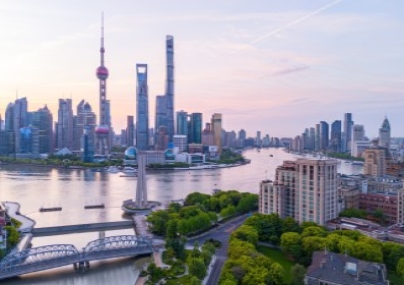
Skip to
Acquisitive and well-heeled Chinese investors are now embracing Southeast Asia as their new focus for investment.
About half of all large Chinese corporations planning to invest abroad now consider Southeast Asia to be their top destination for investment over the next three years, says Herbert Smith Freehills, which did an international survey on investment preferences. By comparison, only 8 percent of respondents said the US is a top destination for future investments.
The results are not that surprising but match some of the signs of late. Credit Suisse, a bank, estimates that Chinese foreign direct investment (FDI) in the six largest of the 10 economies in the Association of Southeast Asian Nations (ASEAN) was poised to reach about $16 billion in 2016. China was the source of about 30 percent of all FDI into Thailand and 20 percent into Malaysia in 2016.
The largest increase was in Indonesia, the largest ASEAN economy and one that Chinese investors are increasingly keen on following meetings between Indonesia’s President Joko Widodo and Chinese President Xi Jinping over the past two years.
The Indonesia Investment Coordinating Board says investment from China in Indonesia reached $1.6 billion between January and September 2016, up from about $600 million for the whole of 2015.
“Tighter relationships with neighboring countries and support from the government level definitely are one of the most important factors in driving the investment flow into this region,” says Ivy Liu, Regional Senior Legal Adviser and Co-Head of the China Desk at DFDL law firm specializing in frontier markets. “Compared to the U.S. or EU, most ASEAN countries are still developing countries which urgently need more money to advance its development. Thus, they generally welcome Chinese investment.”
“We can roughly say, the projects in Southeast Asia may expect less frustration from the governments of host countries. It might be easier to launch a project in Southeast Asia than other developed countries,” says Liu.
Liu points out that Chinese investors are also flooding into Indonesia due to the capital’s thirst for profit and the need to balance out skyrocketing labor costs and material prices in the domestic market.
“More and more Chinese factories have started to move to Vietnam and Cambodia. Chinese real estate developers have started to develop resorts or hotels or residential properties in Thailand and Laos. Some tire producers relocated their factories to Thailand where they can source cheaper raw materials while also sell the final products to local emerging market,” she added.
Back to topHELPING HAND
He Fang, a partner with JunHe, echoed this view and highlights the reality that national policies are, at the same time, encouraging Chinese enterprises to tap ASEAN markets.
“All countries in the region are on the routes of the Belt & Road (B&R) Initiative framework. Favoring polices give incentives to projects taking place in Southeast Asian countries,” says He. “It is not difficult to observe that some companies are adjusting their overseas strategies following the government’s policies and also based on their commercial needs.”
It is also the driving factor behind the large amounts of capital now being injected in energy, particularly renewable energy, and infrastructure. For example, under the B&R Initiative the Chinese government has highlighted its agenda to boost connectivity between China and 65 countries in Asia and Europe by building better infrastructure ties.
Chinese enterprises have always had advantages in energy and basic infrastructure sectors. Meanwhile, there is an unmet need for public transportation and grid connectivity construction in ASEAN countries, particularly in emerging markets.
“For example, some state-owned-enterprises have been constructing and operating mega hydropower projects in Laos for years. The new regime which just took power in Myanmar is also seeking for a change of situation where most part of the country’s rural area still lack electricity connections,” says Liu of DFDL. “It could be the next new destination for Chinese energy firms.”
Experts also say that the expected demise of the Trans-Pacific Partnership Agreement after the election of Donald Trump as the next president of U.S. could turn the spotlight on the Regional Comprehensive Economic Partnership (RCEP). The RCEP could further liberalize trade and investment between the 10 ASEAN countries and China and is expected to be accelerated.
Despite the growing amount of investment and the favourable news, companies should take a cautious approach when exploring the myriad opportunities in the new integrated market.
“Comparing to the U.S. and EU, there are more uncertainties in the region as some authorities in some countries have not established quite transparent systems. This leads to more unpredictable elements in procedures of investment projects; and some countries are still in unstable political environment,” says He. “For example, in some countries, making a tender usually requires a ‘middle-man.’ How to deal with such a situation and make it comply with local regulations is an issue.”
Ma Chenguang, managing partner of Co-effort Law Firm, agrees and pointed out that the ability to execute a judgment issued by an international arbitration body can vary widely.
“Sometimes we find that in a country in the region that, even though it has signed bilateral agreements with China and the arbitration body is recognized in the jurisdiction, executing the results still largely depends on local courts,” says Ma.
“Thus, it requires lawyer to be involved in such investment projects to prepare better and more due diligence investigation in advance with detailed risk reminder, for example, how to bow out from the investment when a dispute happens,” she said.
Back to topLOCAL KNOWLEDGE IS KEY
The way Ma sees it, legal professionals helping their clients do such investment in the region should take more into consideration than just focus on the investment project itself.
“Lawyers should pay more attention to the macro environment, such as local jurisdiction as well as local cultures,” sa Ma.
He of JunHe believes that it is critical to choose a local law firm as a partner to work together with Chinese investors but warns that the development of legal services in some countries in Southeast Asia still lags behind.
“We usually find local firms through alliances that we are participating in or pick one from those that our colleagues have worked with and have given good feedbacks on,” says He. “It is not that easy sometimes, particularly in those frontier markets. For example, in Laos, not many local lawyers can speak fluent English.”
“We recommend Chinese clients select reputable local or international law firms that have long been established in Southeast Asian countries rather than only going for some cheaper choices. Good law firms not only are equipped with local legal knowledge as they retain experienced local lawyers, but also have deep understanding as to how projects are actually implemented. Lawyers are not always unpleasant ‘deal ruiners’ but can also be strong catalysts,” says Liu with DFDL.
Looking forward, Liu sees further growth of Chinese investors jumping into the investment pool in Southeast Asia.
“The previous investments mainly came from SOEs or were backed by Chinese governments. I expect in the future, more and more Chinese private enterprises including SMEs will join the game,” she adds.
Back to top

